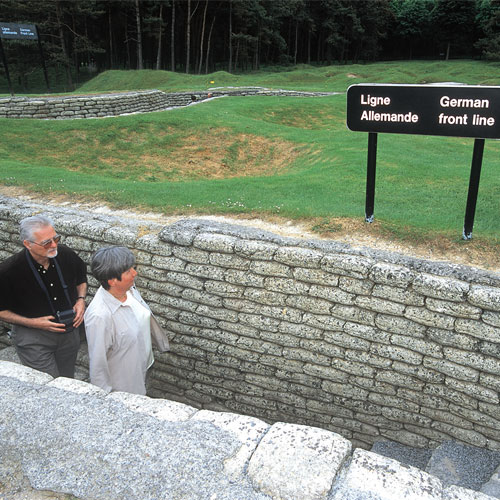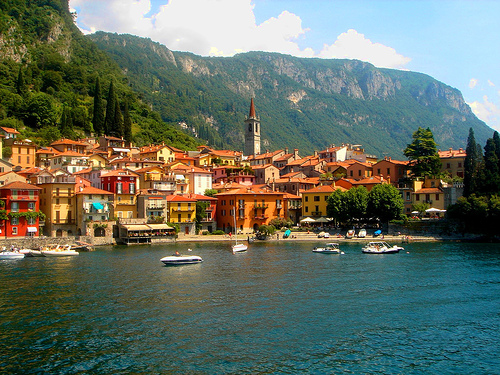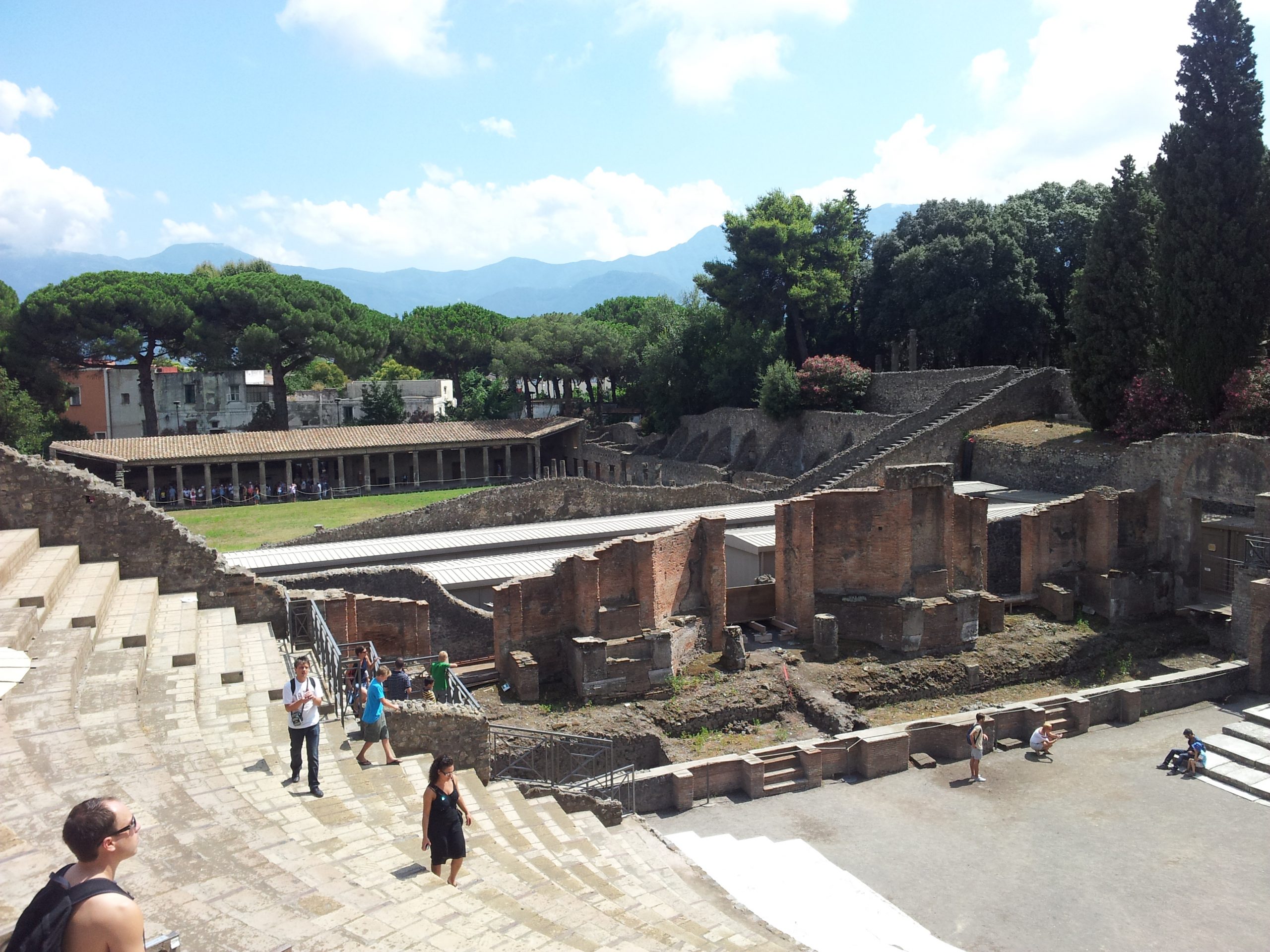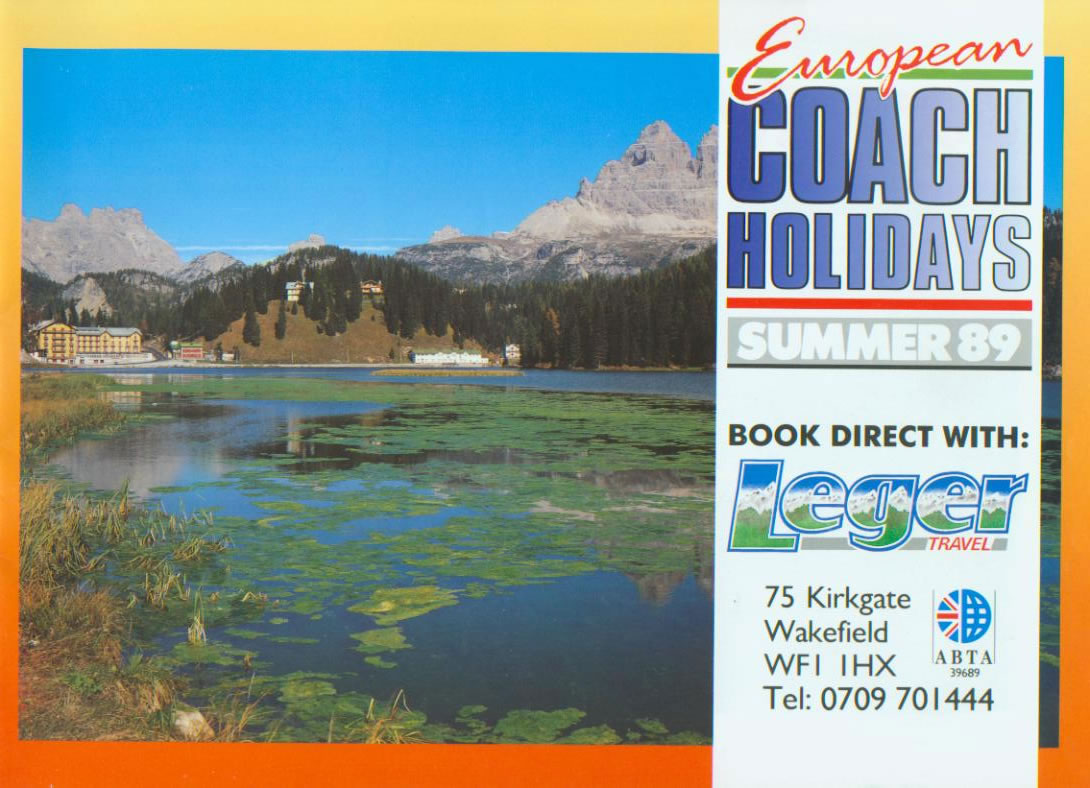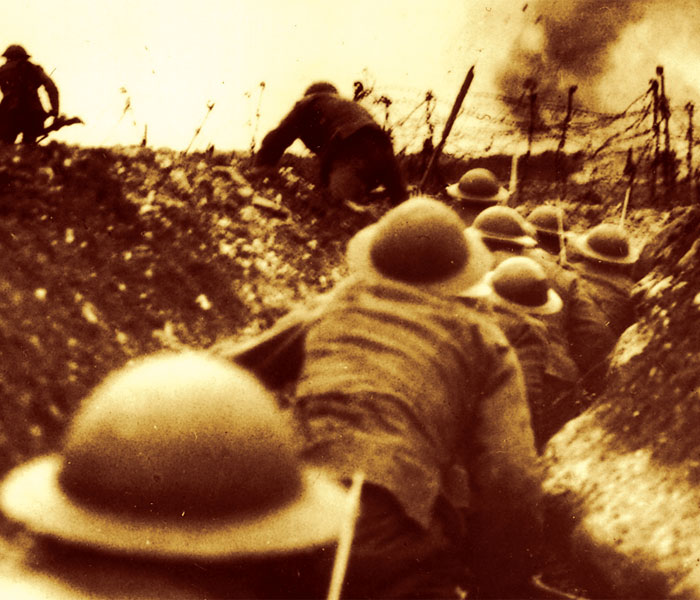The stunning Sagrada Familia, Barcelona’s famous cathedral, was started in 1882 and is said to be just 14 years from completion but it has already been given a new modern look.
Last week, the media company Moment Factory, was invited to create a living fresco on the facade of the building.
Below you can see a video of what was created…
Sagrada Familia (Ode à la vie) – Démo officiel from Moment Factory on Vimeo.
Simple Indian Chicken Curry Recipe
The humble chicken curry has quickly become one of the UK’s favourite dishes and has become as popular as the traditional Sunday dinner in many households. But rather than cooking a boring English version, why not try a traditional Indian chicken curry the next time you fancy something a little spicy!
The recipe below takes around an hour and a half to cook and should feed between 3 and 4 adults.
What you’ll need
2 cloves
1 cinnamon stick
2 green cardamom pods
Cumin seeds
1 finely chopped, medium onion
Ginger
6 chopped garlic cloves
Ground turmeric
Ground coriander
Chilli powder
2 puréed tomatoes
450g chicken
Garam masala
How to cook it
- Start by adding a large glug of oil to a large frying pan over a medium to high heat. Add the garlic, cinnamon, cardamom and a tea spoon of cumin seeds and cook for around 30 seconds.
- Add the onion and cook until soft and golden.
- Stir in a table spoon of ginger and coriander, the garlic, half a tea spoon of chilli and turmeric and a pinch of salt and pepper.
- Add the tomatoes and cook until the liquid in the pan has dried out (around 10 minutes should do it).
- Pop the chicken in and cook for around 3 minutes until browned.
- Pour in around 300ml of water and allow to cook on a gentle heat for around 20 minutes.
- Check the chicken is thoroughly cooked before adding the garam masala and serving with rice or a traditional Indian flat bread.
Make it vegetarian
As a simple way to get more vegetables into your diet why not create your own veg curry? All you need to do is substitute the chicken for some par boiled cauliflower, broccoli and potatoes for a tasty dish packed with nutrients.
Arras – Britain’s Bloodiest Battle & The War Underground
The city of Arras was taken over by British troops in early 1916; upon arrival it was found that the former French occupants had used a series of quarries beneath the city to shelter troops, equipment and supplies.
The British then utilised New Zealander tunnellers in a unique operation to link all these quarries up to create a vast underground city which could be used to shelter the entire army along this front – and which would play a major part in operations here in 1917.
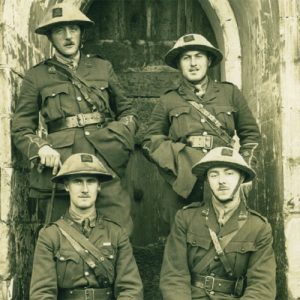
One part of this tunnel system opened in early 2008 – the so-called Wellington Quarries is a focal point. Take a tour of the tunnels and discover what it was like to live underground beneath Arras in WW1.
This is a unique experience; the chance to go underground like this is rare on the old Western Front battlefields.
Going out on to the battlefields around Arras you discover why Arras became Britain’s bloodiest battle. This small area of northern France saw the highest casualty rates of the war; with more than 4,000 fatal casualties per day in the battle fought here in April and May of 1917.
Aside from old favourites like Vimy Ridge, the tour looks in depth at some forgotten battlefields like the Chemical Works at Roeux, where the 51st (Highland) Division in particular had grievous losses.
Visit the evocative sunken lane at Fampoux, to see where a handful of Seaforth Highlanders tried to take the German defences nearby, and is now the site of their regimental memorial. At the old abbey of Mont St. Eloi, discuss the air war over Arras, and the daring pilot that flew between the towers of the abbey in 1918.
Leger’s Arras tour looks at the French involvement in the fighting here in the early phase of the war visiting the largest French cemetery from WW1 at Notre Dame de Lorette, and don’t ignore the German sacrifice either, with a visit to the La Targette German cemetery which has more than 44,000 burials – a huge hillside of black crosses.
Join us on the fascinating look at one of the most important battlefields of the Great War, but perhaps one of the least visited. Find out more about our Battlefield Tours.
Win A Google Nexus 7 With Leger Holidays
To celebrate the launch of our brand new 2013 brochure we are giving you the chance to win a Google Nexus 7 tablet.
The Nexus 7 is at the cutting edge of modern technology, you can browse the internet, watch films and even read our new brochure on it. It’s the perfect travel companion.
If you would like to view our new brochure on your computer, tablet or smartphone simply click here, and for your chance to win a Google Nexus 7, all you have to do is enter your name and email address on our Google Nexus 7 competition page, good luck!
Savour a taste of La Dolce Vita… enjoy life as it should be lived!
Back in 2007 we launched our ‘Beauty of Lakes Como and Maggiore’ tour, which combined splendid lakeland scenery with fantastic excursions to Milan, St. Moritz and Lugano. It proved to be very popular with our customers so our Senior Customer Services Executive, Rita Lamb decided to see it for herself, below she shares he thoughts of the trip with us.
What made you choose this holiday?
I love Italy and have previously visited Lake Garda so wanted to see some of the other lakes. I also wanted to visit one of the shopping capitals of the world, Milan. Plus the excursions on this tour all sounded so lovely.

Was there a favourite place that you visited?
I think it would have to be the lake cruise including the villas Carlotta and Balbianello. This was a very relaxing day and after the Villa Balbianello we returned to Tremezzo and had lunch together before taking a short stroll up the road to the Villa Carlotta. Both villas have the most amazing gardens and you can go inside the Villa Carlotta which has beautiful interiors.
If our guests could only go on one optional excursion which should it be?
I really enjoyed the trip to Lake Maggiore & the Borromean Islands, again because of the beautiful gardens at the villa. The trip to Milan was exciting to see all the fashion houses and the ride on the Bernina Express gave us some of the most spectacular sights of the holiday.
Can you recommend any restaurants or cafes?
There is a nice little restaurant directly outside the Hotel Bazzoni in Tremezzo which does lovely salads and lunches. A little further along try the Bar Red & White where the staff are really friendly and again they do nice lunches, snacks and drinks.
Do you have any tips for people visiting the area?
In Milan, if you want to go inside the cathedral don’t forget to cover your shoulders and gents must not wear shorts. Comfy shoes are needed for the villas as there are steps plus you will be getting on and off the boats. When you go to the restaurant in the evening in Tremezzo ask the waiters if you can sit on the terrace and then you can enjoy the unrivalled views across the lake whilst having your evening meal.
If you like the sound of our Lakes Como & Maggiore tour you can find out more about it on our main site.
Cover image courtesy of flickr user Riccardo T
Discover Pompeii at the British Museum
The ancient ruins of Pompeii are amongst the most popular tourist attractions in all of Italy.
Every year thousands of tourists make the journey to the south of Italy just to see the astonishing remains of Pompeii. They walk along the original streets, gaze into partially ruined homes and buildings and even admire the perfectly preserved mosaics.
But now you can get a taste of Pompeii without leaving the country. The British Museum are bringing a truly unique exhibition to London that details the destruction of Pompeii and Herculaneum.
On show are the body casts of six people, including a family of two adults and two children who died huddled together under the steps of their villa. You can also see a loaf of bread that was put into the oven by a Roman slave in AD79 and not taken out until the 1930’s when it was discovered by archaeologists that uncovered the bakery 18 centuries later.
The show opens at the British Museum in March 2013 and runs until September 2013. For more information and to book tickets click here.
And if you would prefer to see the real Pompeii then our best selling tour is available now from only £459pp, find out more now.
Experience the magic of a Christmas Market break
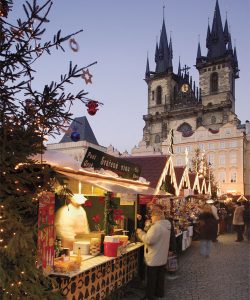
Did you know that the first recorded Christmas markets date back as far as the 1400s. The markets gave people living in rural areas the chance to make a special trip into town to get all of their Christmas shopping done in one go. The craftsmen would lay their goods out on the street, which consisted of wooden toys, sweets and simple foods, plus people could get their knives sharpened and cooking pots mended. Little did these people know that the European Christmas markets would become a tradition that is still going strong centuries later.
These days Christmas markets are much more colourful. Imagine cosy wooden cabins selling hand-made gifts from around the region, twinkling Christmas lights shining brightly as the evening draws in and the delicious smells of traditional good food. In fact there’s no need to imagine as this year you could actually be there among the hustle and bustle with a glass of mulled wine and a bag full of unusual presents for the family.
Three festive facts…
Here are a few interesting festive facts about the traditions of Christmas…
1. It was Martin Luther who first introduced new customs for Christmas. Originally people exchanged presents on St Nicholas’ Day on December 6th, but Luther suggested children receive their presents from the Christ child instead therefore moving the day to Christmas Eve. This helped establish the Christmas markets into longer and more special events. Today they begin the last week of November, signalling the beginning of Advent, and run right up until just before Christmas.
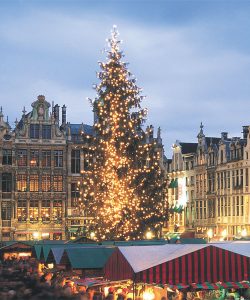
2. One of the lasting images of the festive season is the Christmas tree. The first recorded mention of a decorated tree goes back to Riga, Latvia, in around 1510AD. The first trees to arrive in British homes came with the Georgian kings who originated in Germany. However, it was only when Prince Albert, Queen Victoria and their family were illustrated in a London newspaper in 1846 enjoying Christmas around a tree did the public follow suit and begin buying and decorating trees of their own. Many of the Christmas markets have brightly decorated trees, therefore keeping up the tradition.
3. When Christmas markets first started they were held around the city’s main church, just like the markets in places like Cologne and Trier are today. This was done to attract church-goers. In 1616 a priest in Nuremberg complained that he could not hold the afternoon service on Christmas Eve as the stalls were so enticing and no-one was attending. And the markets are even more enticing today.
The best places to visit…
If you’d like to join us and visit one of the many European Christmas markets but aren’t sure which is the right one for you, then here’s a little help…
Germany
For picture postcard scenery there’s Cochem with its fairy tale castle set on a vine-clad hill looking down over the river. Add to this the sights and sounds of the Christmas market for a truly magical experience. If it’s variety you want then Cologne is the place as it has 6 different markets dotted around the city, including the floating market aboard one of the cruise ships moored along the Rhine promenade. To taste delicious pastries and cakes straight from the oven visit Aachen. The town’s bakers distribute produce all over the world and the Christmas markets in the old city centre attract over 1.5 million visitors annually. For a little local entertainment visit Trier where local artists perform at the Market Pavilion, and whilst you’re soaking in the atmosphere why not try some pancakes with a hot chocolate.
France
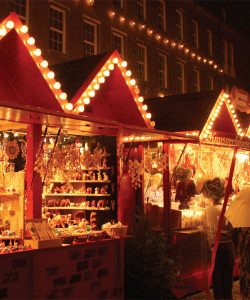
Rouen, the capital of upper Normandy, truly enjoys the run up to Christmas to the full. You’re bound to find something you want to buy amongst the stalls full of Normandy cider, cheeses and the local brandy, Calvados. For local handicraft gifts visit Lille where you can buy items such as jewellery and pottery after a ride on the ferris wheel.
Austria
If you want sightseeing as well as shopping then visit Innsbruck. This beautiful alpine town has twice been host to the Winter Olympics, plus there’s the Golden Roof, Imperial Palace and Triumphal Arch to see. For a romantic getaway Salzburg is the place. As well as the stalls set around the Baroque Cathedral there are pretty boutiques and you can visit the birthplace of Mozart.
These are but a few of the Christmas markets in Europe that Leger Holidays can take you to. And whether you travel by coach, Eurostar or air you are sure to have one of the most amazing festive experiences ever!
You can find out more about our selection of Christmas Market Breaks on our website.
Coach Holidays in the UK – Discover Our 5 Must-See Sights
Sometimes the best things in life can be found right under your nose, and that is definitely true of coach holidays in the UK!
With stunning rolling hills, beautiful stately homes and picturesque scenery the UK is often overlooked by many holidaymakers.
But if you do decide to holiday a little closer to home, not only do you benefit from reduced travel times and some of the finest food in the whole of Europe, but you also know exactly where you’re going and what to expect. It’s a wonder that more people don’t choose a holiday in good old blighty.
Below we highlight five great sights to see in the UK…
1. Snowdonia
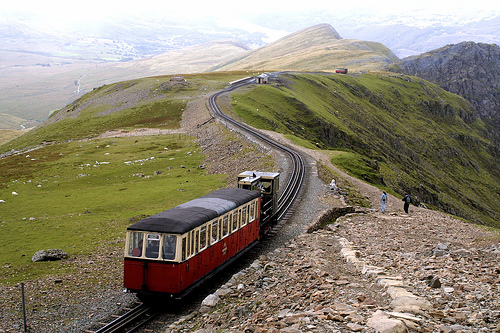
A mountain top rail journey through picturesque valleys and fossil filled lands isn’t the first thing you think about when considering a holiday in Wales, but that’s exactly what you can expect in Snowdonia.
The area is filled trails for hiking and cycling through this mountainous region but we would definitely recommend a journey on the Snowdon Express. On board the train you will travel along the Snowdon Mountain Railway taking in fantastic sights including waterfalls and ancient forests before arriving at the Summit Visitor Centre. From here you are free to enjoy the stunning views across an unspoilt landscape from the very top of Wales.
2. Corbiere Lighthouse
The stunning Corbiere Lighthouse is situated just off the south-west coast of Jersey and was built some 140 years ago. On certain dates you can join a guided sightseeing tour of the lighthouse where you will be told tales about the tides, shipwrecks and the history of this grand old building.
3. Tintagel Castle
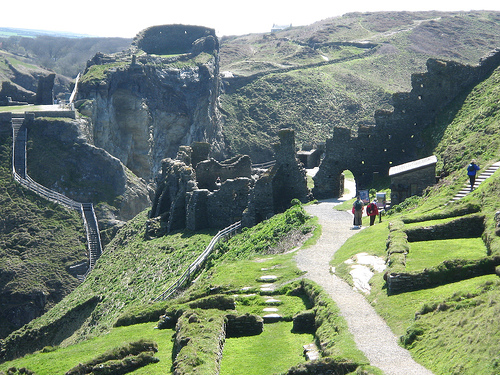
For a fantastic family day out, a visit to Tintagel Castle is not to be missed. Said to be the birthplace of King Arthur and home to Merlin’s Cave, this ancient land is well worth a visit.
You can spend your day exploring the vast caves on the beach front, strolling around the ancient ruins of King Arthur’s castle and treating yourself to a spot of afternoon tea and a scone in the local cafe.
4. St. Ives
Palm covered, white sandy beaches and crystal clear waters aren’t always accompanied by a long flight to an exotic destination.
On the south coast of England lies the popular seaside resort of St. Ives which is home to some of the UK’s best beaches. With over 50 miles of coastline you can spend your days relaxing on world-class beaches, exploring mysterious caves and discovering an undersea world filled with crabs, shrimp and many other interesting creatures. And if the weather isn’t up to much you can head inland and meander along cobbled streets, stopping along the way to visit quaint local shops and delicious tearooms.
5. Alnwick Castle
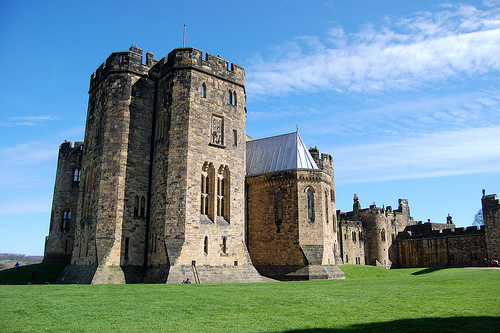
Alnwick Castle, in Northumberland, is one of the largest inhabited castles in all of Europe and has been home to the Duke of Northumberland’s family for over 700 years.
It has provided the backdrop to many period drams and Harry Potter films over the years and offers a fantastic day out for the whole family. You can spend your time walking along the castles scenic coastline, exploring the small museums dotted throughout the castle and gazing at the many examples of fine art the family have collected over the years.
If you’ve been inspired to take a coach holiday in the UK then you can view our full range of escorted tours at Leger.co.uk/UK.
Images courtesy of angusleonard, IDS.Photos and westy48
Check out these old holiday brochures from as far back as 1989!
To celebrate Leger Holiday’s 30th anniversary we’ve been searching through our archives and dug up some of our old brochure covers, check them out below…
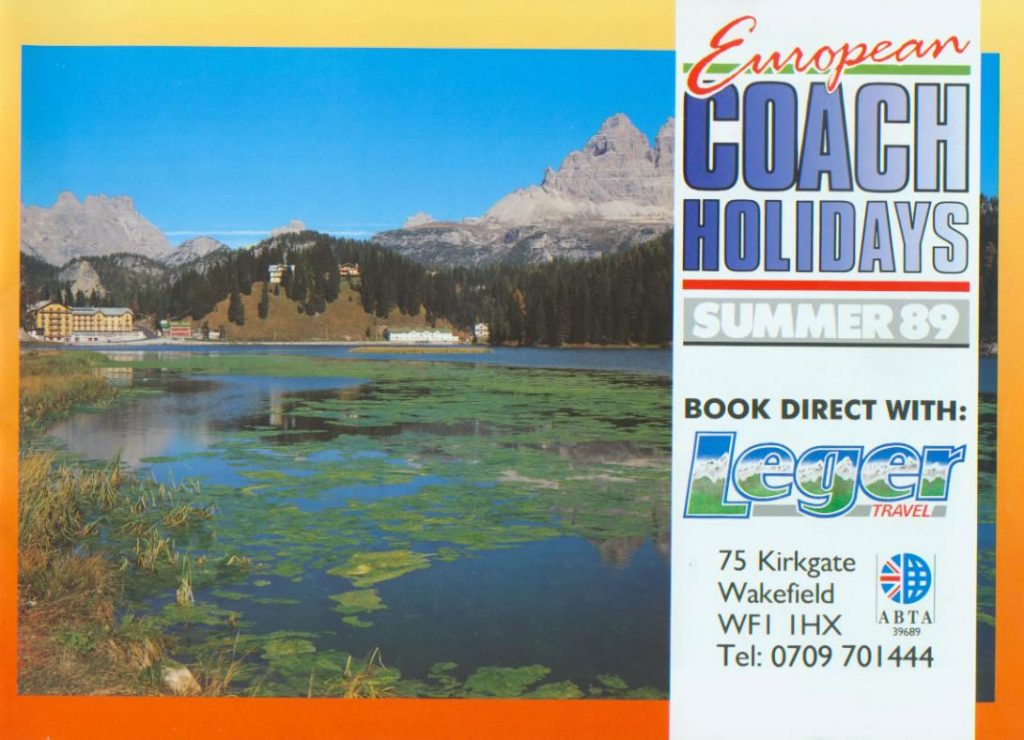
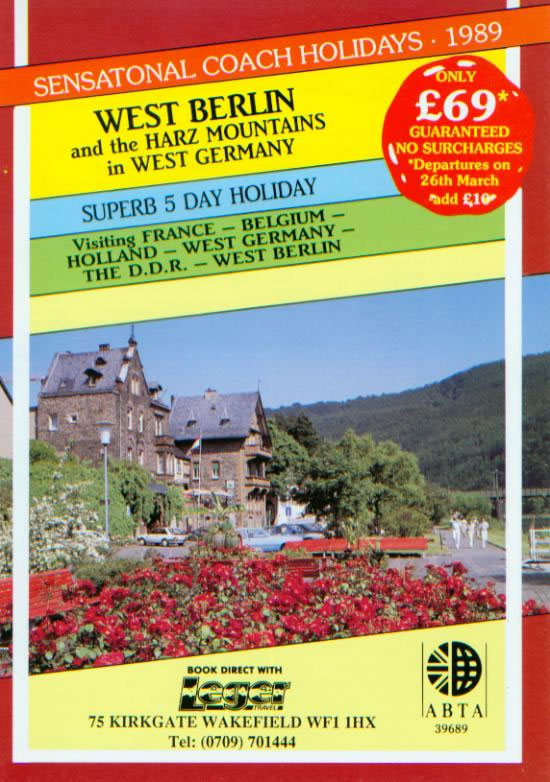
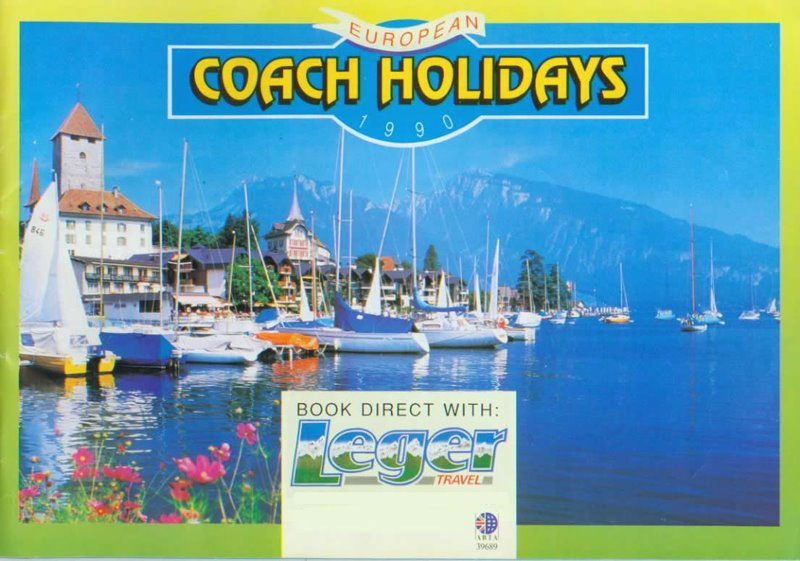
If you have any Leger memorabilia or old brochures we would love to hear from you. Just add a comment below or use our contact form.
Fields of Gold and Red by David Holmes
We’re always delighted to receive feedback from people who have experienced one of our excellent Battlefield Tours, and when David Holmes got in touch with us we couldn’t wait to share some of his experiences and poetry with you!
David is the author of The Peaceful Poet website and has also published two books. He has kindly shared one of his poems with us along with some of the inspiration he found whilst on Leger Holidays’ All Quiet on the Western Front tour.
‘I was lucky, I never had to fight in a War, but my Grandfather did and so did my Father. My Grandfather, had lost his life in the First World War, and as far as I could tell no one had visited his grave, nor indeed knew that much about what he had endured.All Quiet on the Western Front
I decided I owed him at least that, to find out, record for posterity, and, visit his final resting place, among the blood red poppies in those fields in France.
My journey started with a small step that is still ongoing and resulted in me visiting The Western Front on an organised Battlefields tour with Leger Holidays.
Officially or not, the trip includedThe St Leger Cemetery a lunchtime trip to a farmyard in St Leger where I was able to walk with our tour guide, Clive Harris, along a farm track. After a short walk we came to a gate, and on opening it, we entered a beautifully kept, grass covered path which lead to the entrance of the St Leger War Cemetery. The Cross of Sacrifice keeping silent vigil over the white stones that marked the final resting place of some 200 brave boys, my Grandfather included.
I had already been inspired to write a poem about my Grandfather and several others about the First War and my impression of what it must have been like during and afterwards. I share one of them with you now.’
Fields of gold and red
I stood amongst the fields of corn,
that swayed gently in the breeze,
I heard a single thrush sing,
in the far off trees
and there, amongst the golden heads,
a million poppies danced,
one for all those long dead boys, who died,
in these fields, in France.
(© david holmes 2004)
To find out more about David’s head over to his website – The Peaceful Poet



